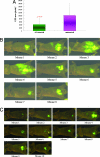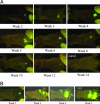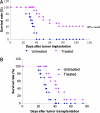Monotherapy with a tumor-targeting mutant of Salmonella typhimurium cures orthotopic metastatic mouse models of human prostate cancer
- PMID: 17548809
- PMCID: PMC1891231
- DOI: 10.1073/pnas.0703867104
Monotherapy with a tumor-targeting mutant of Salmonella typhimurium cures orthotopic metastatic mouse models of human prostate cancer
Abstract
Bacterial infection occasionally has a marked therapeutic effect on malignancies, as noted as early as the 19th century. Recently, there have been attempts to develop cancer treatment by using tumor-targeting bacteria. These treatments were developed to deliver therapeutic molecules specifically to tumors. Researchers used anaerobic microorganisms that preferentially grew in necrotic tumor areas. However, the resulting tumor killing was, at best, limited. We have developed a far more effective bacterial cancer therapy by targeting viable tumor tissue by using Salmonella typhimurium leu-arg auxotrophs. Although these bacteria grow in viable as well as necrotic areas of tumors, the nutritional auxo trophy severely restricts growth in normal tissue. In the current study, we measured the antitumor efficacy of the S. typhimurium A1-R mutant, which is auxotrophic for leu-arg and has increased antitumor virulence selected by tumor passage. A1-R was used to treat metastatic PC-3 human prostate tumors that had been orthotopically implanted in nude mice. GFP was used to image tumor and metastatic growth. Of the 10 mice with the PC-3 tumors that were injected weekly with S. typhimurium A1-R, 7 were alive and well at the time the last untreated mouse died. Four A1-R-treated mice remain alive and well 6 months after implantation. Ten additional nontumor-bearing mice were injected weekly to determine the toxicity of S. typhimurium A1-R. No toxic effects were observed. The approach described here, where bacterial monotherapy effectively treats metastatic prostate tumors, is a significant improvement over previous bacterial tumor-therapy strategies that require combination with toxic chemotherapy.
Conflict of interest statement
The authors declare no conflict of interest.
Figures






References
Publication types
MeSH terms
Substances
Grants and funding
LinkOut - more resources
Full Text Sources
Other Literature Sources
Medical

